Urdu Grammar (4th to 10th) Free PDF 2024 Read Online
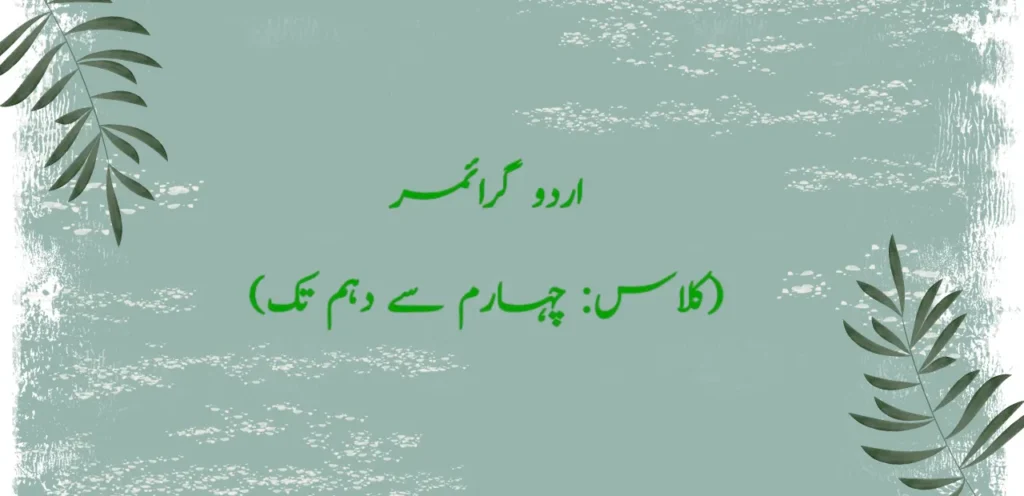
Introduction
Urdu Grammar (4th to 10th) the national language of Pakistan and one of the most widely spoken languages in South Asia, is known for its poetic beauty and rich cultural heritage. However, to truly appreciate and effectively communicate in Urdu, a strong foundation in its grammar is essential. This comprehensive guide is designed to help students from 4th to 10th grade navigate the intricacies of Urdu grammar, providing a structured approach to learning and mastering this elegant language.
Why is understanding Urdu grammar so important? Here are a few key reasons:
- Effective communication: Proper grammar allows you to express your thoughts clearly and precisely, avoiding misunderstandings.
- Cultural appreciation: A deep understanding of Urdu grammar opens doors to fully appreciate Urdu literature, poetry, and media.
- Academic success: For students in Pakistan and parts of India, strong Urdu skills are crucial for academic achievement.
- Cognitive benefits: Learning grammar enhances critical thinking and analytical skills that are valuable across all subjects.
This guide covers essential topics such as sentence structure, nouns, pronouns, verbs, adjectives, adverbs, and more advanced concepts for older students. Each section includes clear explanations, examples, and exercises to reinforce learning.
By the end of this guide, you will:
- Understand the fundamental rules of Urdu grammar
- Be able to construct grammatically correct sentences in various forms
- Recognize and correct common grammar mistakes
- Have a solid foundation for further language study and literary appreciation
Let’s embark on this journey to master Urdu grammar, starting with the basics of sentence structure.
Also, Check Asan Urdu Grammer For NTS, CSS, PPSC & Educators: Free PDF Read Online
Basic Urdu Sentence Structure
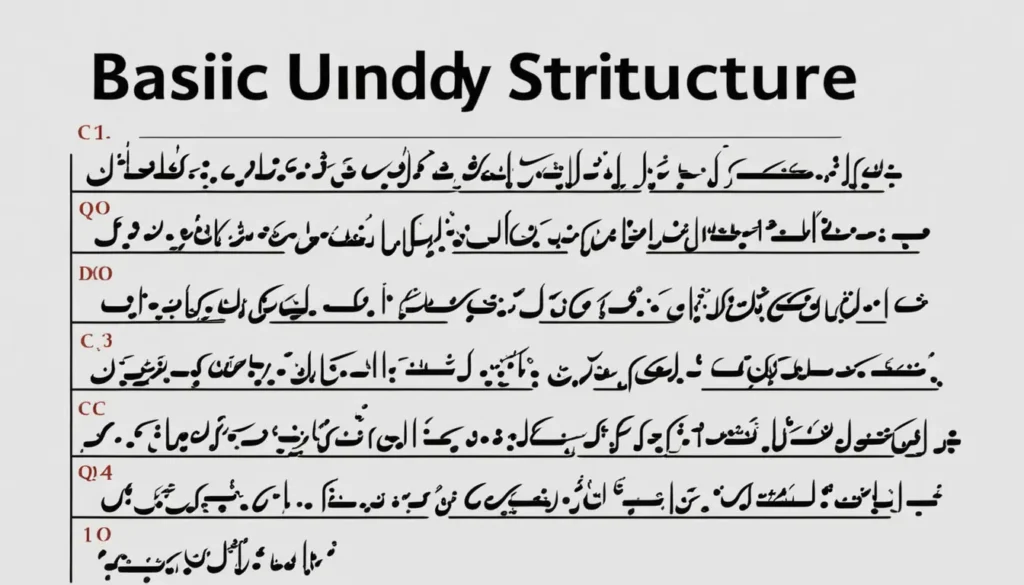
Understanding the basic structure of Urdu sentences is crucial for building a strong foundation in the language. Urdu follows a Subject-Object-Verb (SOV) word order, which is different from English and many other languages. This unique structure contributes to the lyrical quality of Urdu and allows for some flexibility in expression.
Subject-Object-Verb (SOV) Order
In Urdu, the typical sentence structure is:
Subject + Object + Verb
For example:
- میں کتاب پڑھتا ہوں۔ (Main kitab padhta hoon.)
- Transliteration: I book read.
- English: I read a book.
Notice how the verb comes at the end of the sentence, unlike in English where it would be in the middle.
Flexibility in Sentence Structure
While SOV is the standard order, Urdu allows for some flexibility, especially in poetry or emphasis. For instance:
- OSV (Object-Subject-Verb):
- کتاب میں پڑھتا ہوں۔ (Kitab main padhta hoon.)
- Emphasizes the object “book”
- کتاب میں پڑھتا ہوں۔ (Kitab main padhta hoon.)
- SVO (Subject-Verb-Object):
- میں پڑھتا ہوں کتاب۔ (Main padhta hoon kitab.)
- More commonly used in casual speech
- میں پڑھتا ہوں کتاب۔ (Main padhta hoon kitab.)
Examples and Exercises
Let’s look at more examples and practice constructing Urdu sentences:
- Simple sentence:
- علی اخبار پڑھتا ہے۔ (Ali akhbar padhta hai.)
- Ali newspaper reads.
- Ali reads the newspaper.
- Sentence with adjective:
- سارہ سرخ گلاب پسند کرتی ہے۔ (Sarah surkh gulab pasand karti hai.)
- Sarah red roses likes.
- Sarah likes red roses.
- Question:
- آپ کہاں جا رہے ہیں؟ (Aap kahan ja rahe hain?)
- You where going are?
- Where are you going?
Exercise: Try translating these English sentences into Urdu, keeping in mind the SOV structure:
- The cat drinks milk.
- We are going to school.
- They played cricket yesterday.
(Answers will be provided at the end of this section)
Understanding and practicing these basic sentence structures will help you build confidence in constructing your own Urdu sentences.
Nouns in Urdu
Nouns are essential building blocks of any language, and Urdu is no exception. In Urdu, nouns have several characteristics that students need to understand to use them correctly.
Types of Nouns
Urdu nouns can be categorized into several types:
- Common Nouns: General names for people, places, or things. Example: لڑکا (larka – boy), شہر (sheher – city), کتاب (kitab – book)
- Proper Nouns: Specific names for individuals, places, or organizations. Example: احمد (Ahmed), لاہور (Lahore), پاکستان (Pakistan)
- Abstract Nouns: Names of qualities, ideas, or concepts. Example: محبت (muhabbat – love), آزادی (azadi – freedom), خوشی (khushi – happiness)
- Collective Nouns: Names for groups of people or things. Example: فوج (fauj – army), گلہ (gala – herd), خاندان (khandan – family)
Gender in Urdu Nouns
Urdu nouns are either masculine or feminine. Unlike some languages, Urdu doesn’t have a neuter gender. The gender of a noun affects the form of adjectives and verbs used with it.
- Masculine nouns often end in ا (a) or ہ (h). Example: لڑکا (larka – boy), گھوڑا (ghora – horse)
- Feminine nouns often end in ی (i) or ت (t). Example: لڑکی (larki – girl), عورت (aurat – woman)
However, there are many exceptions to these rules, and some nouns have no specific ending to indicate gender. Students must learn the gender of nouns through practice and exposure to the language.
Number (Singular and Plural)
Urdu nouns can be singular or plural. The rules for forming plurals vary depending on the gender and origin of the noun.
- Masculine nouns ending in ا (a):
- Singular: لڑکا (larka, boy)
- Plural: لڑکے (larke, boys)
- Feminine nouns ending in ی (i):
- Singular: لڑکی (larki, girl)
- Plural: لڑکیاں (larkiyan, girls)
- Nouns of Arabic origin:
- Often form plurals by changing internal vowels
- Example: کتاب (kitab, book) → کتب (kutub, books)
- Irregular plurals:
- Some nouns have irregular plural forms that must be memorized
- Example: آدمی (aadmi, man) → لوگ (log, people)
Case
Urdu nouns can change form depending on their role in a sentence. This is called case. The two main cases in Urdu are:
- Nominative case: Used for the subject of a sentence. Example: لڑکا کھیلتا ہے۔ (Larka khelta hai. – The boy plays.)
- Oblique case: Used when the noun is the object of a verb or follows a postposition. Example: لڑکے کو کتاب دو۔ (Larke ko kitab do.—Give the book to the boy.)
In the oblique case, masculine nouns ending in ا (a) change to ے (e), while most other nouns remain unchanged.
Understanding these aspects of Urdu nouns is crucial for constructing grammatically correct sentences and expressing ideas accurately.
Pronouns in Urdu
Pronouns are words that replace nouns in sentences. In Urdu, pronouns play a vital role in sentence construction and vary based on person, number, gender, and case.
Personal Pronouns
Personal pronouns in Urdu change form based on their role in the sentence (subject or object) and the level of formality:
- First Person:
- میں (main, I)
- ہم (hum, we)
- Second Person:
- تم (tum – you, informal)
- آپ (aap: you, formal/respectful)
- Third Person:
- وہ (woh—he/she/it/they)
Example:
- میں کتاب پڑھتا ہوں۔ (Main kitab padhta hoon. – I read a book.)
- ہم نے فلم دیکھی۔ (Hum ne film dekhi. – We watched a movie.)
Demonstrative Pronouns
These pronouns point to specific people or things:
- ,یہ (yeh – this/these)
- , or وہ (woh – that/those)
Example:
- یہ میری کتاب ہے۔ (Yeh meri kitab hai. – This is my book.)
- —thatوہ گھر بہت بڑا ہے۔ (Woh ghar bohat bara hai. – That house is very big.)
Relative Pronouns
.Relative pronouns connect clauses or phrases to nouns:
- جو (jo, who, which, that)
- جس (jis, whose, which)
Example:
- وہ لڑکا جو کھڑا ہے میرا بھائی ہے۔ (Woh larka jo khara hai mera bhai hai. – The boy who is standing is my brother.)
Interrogative Pronouns
Used to ask questions:
- ,کون (kaun – who)
- کیا (kya – what)
- ,کس (kis – which)
Example:
- hain?—Whoآپ کون ہیں؟ (Aap kaun hain? – Who are you?)
- (آپ کیا کر رہے ہیں؟ (Aap kya kar rahe hain? – What are you doing?)
Using pronouns correctly can make your Urdu more fluent and natural-sounding. Practice using different types of pronouns in various sentence structures to improve your skills.
Verbs in Urdu
Verbs are the action words of a language, and in Urdu, they have a complex system of conjugation that reflects tense, aspect, mood, and agreement with the subject.
Verb Conjugation
Urdu verbs change form based on the gender and number of the subject, as well as the tense of the sentence. The basic form of the verb is the infinitive, which usually ends in نا (na).
Example:
- کھانا (khana, to eat)
- پڑھنا (parhna, to read)
Tenses
Urdu has three main tenses: present, past, and future.
- Present Tense:
- میں کھاتا ہوں۔ (Main khata hoon. – I eat.)
- وہ پڑھتی ہے۔ (Woh parhti hai, she reads.)
- Past Tense:
- میں نے کھایا۔ (Main ne khaya., I ate.)
- اس نے پڑھا۔ (Us ne parha.). (He/She read.)
- Future Tense:
- میں کھاؤں گا۔ (Main khaoon ga., I will eat.)
- وہ پڑھے گی۔ (Woh parhe gi.—she will read.)
Aspect
Aspect in Urdu verbs indicates whether an action is completed, ongoing, or habitual.
- Perfect Aspect:
- میں نے کھانا کھا لیا ہے۔ (Main ne khana kha liya hai.: I have eaten the food.)
- Imperfect Aspect:
- وہ کتاب پڑھ رہا تھا۔ (Woh kitab parh raha tha, he was reading the book.)
- Habitual Aspect:
- وہ روزانہ سکول جاتا ہے۔ (Woh rozana school jata hai. – He goes to school daily.)
Mood
Mood expresses the speaker’s attitude towards an action.
- Indicative Mood (stating facts):
- سورج مشرق سے نکلتا ہے۔ (Suraj mashriq se nikalta hai.: The sun rises in the east.)
- Subjunctive Mood (expressing wishes or hypothetical situations):
- کاش بارش ہو۔ (Kaash barish ho., if only it would rain.)
- Imperative Mood (giving commands):
- کتاب پڑھو۔ (Kitab parho. – Read the book.)
Understanding and correctly using Urdu verbs is crucial for expressing actions, states, and intentions accurately. Regular practice with different verb forms in various contexts will help improve your Urdu language skills.
Adjectives in Urdu
Adjectives in Urdu are words that describe or modify nouns. They play a crucial role in making language more descriptive and expressive.
Types of Adjectives
- Descriptive Adjectives: These describe qualities of nouns. Example: خوبصورت (khoobsurat, beautiful), بڑا (bara, big)
- Demonstrative Adjectives: These point out specific nouns. Example: یہ (yeh, this), وہ (woh, that)
- Possessive Adjectives: These show ownership. Example: میرا (mera, my), تمہارا (tumhara, your)
- Quantitative Adjectives: These indicate quantity. Example: بہت (bohot, many), کچھ (kuch, some)
Agreement with Nouns
In Urdu, adjectives often agree with the noun they modify in gender and number.
- For masculine singular nouns: اچھا لڑکا (accha larka, good boy)
- For feminine singular nouns: اچھی لڑکی (acchi larki, good girl)
- For masculine plural nouns: اچھے لڑکے (acche larke, good boys)
- For feminine plural nouns: اچھی لڑکیاں (acchi larkiyan, good girls)
Comparative and Superlative Forms
Urdu uses specific words to form comparative and superlative adjectives:
- Comparative: Use زیادہ (zyada, more) or کم (kam, less) Example: زیادہ خوبصورت (zyada khoobsurat, more beautiful)
- Superlative: Use سب سے (sab se, the most) Example: سب سے خوبصورت (sab se khoobsurat, the most beautiful)
Using adjectives effectively can greatly enhance your Urdu expression, making your language more vivid and precise.
Adverbs in Urdu
Adverbs in Urdu modify verbs, adjectives, or other adverbs, providing information about how, when, where, or to what extent an action is performed.
Types of Adverbs
- Adverbs of Manner: Describe how an action is performed. Example: آہستہ (ahista, slowly), جلدی (jaldi, quickly)
- Adverbs of Time: Indicate when an action occurs. Example: کل (kal, yesterday/tomorrow), اب (ab, now)
- Adverbs of Place: Show where an action happens. Example: یہاں (yahan, here), وہاں (wahan, there)
- Adverbs of Degree: Express the intensity or degree of an action. Example: بہت (bohat – very), تھوڑا (thora – a little)
Formation and Usage
Many Urdu adverbs are formed by adding سے (se) to adjectives or nouns:
- خوبصورتی سے (khoobsurati se, beautifully)
- آسانی سے (asani se, easily)
Adverbs in Urdu often maintain their form regardless of the gender or number of the subject. They typically appear before the verb or adjective they modify.
Example:
- وہ تیزی سے دوڑتا ہے۔ (Woh tezi se daurta hai. – He runs quickly.)
- یہ کتاب بہت دلچسپ ہے۔ (Yeh kitab bohat dilchasp hai. This book is very interesting.)
Understanding and using adverbs correctly can significantly enhance the clarity and expressiveness of your Urdu.
Postpositions in Urdu
Postpositions in Urdu serve a similar function to prepositions in English, but they come after the noun or pronoun they modify. They are crucial for expressing relationships between words in a sentence.
Common Postpositions
Some frequently used Urdu postpositions include:
- کو (ko): to, for
- میں (mein): in, into
- پر (par): on, upon
- سے (se): from, with
- کے لیے (ke liye) – for
- کے ساتھ (ke saath) – with
Usage and Examples
Postpositions often require the noun they follow to be in the oblique case.
- مجھ کو (mujh ko, to me)
- گھر میں (ghar mein, in the house)
- میز پر (mez par, on the table)
- قلم سے (qalam se, with the pen)
- بچوں کے لیے (bachchon ke liye, for the children)
- دوست کے ساتھ (dost ke saath, with a friend)
Mastering the use of postpositions is essential for constructing grammatically correct and natural-sounding Urdu sentences.
Conjunctions in Urdu
Conjunctions are words that connect words, phrases, or clauses in a sentence. Urdu has two main types of conjunctions:
Coordinating Conjunctions
These join words, phrases, or clauses of equal importance:
- اور (aur, and)
- یا (ya, or)
- لیکن (lekin, but)
- مگر (magar, but)
Example:
- میں نے کتاب پڑھی اور فلم دیکھی۔ (Main ne kitab parhi aur film dekhi.: I read a book and watched a movie.)
Subordinating Conjunctions
These join a dependent clause to an independent clause:
- اگر (agar, if)
- کیونکہ (kyunke, because)
- جب (jab – when)
- تاکہ (taake, so that)
Example:
- اگر بارش ہوئی تو میں گھر پر رہوں گا۔ (Agar barish hui to main ghar par rahoon ga. (If it rains, I will stay at home.)
Using conjunctions correctly helps in creating more complex and sophisticated sentences in Urdu.
Urdu Sentence Types
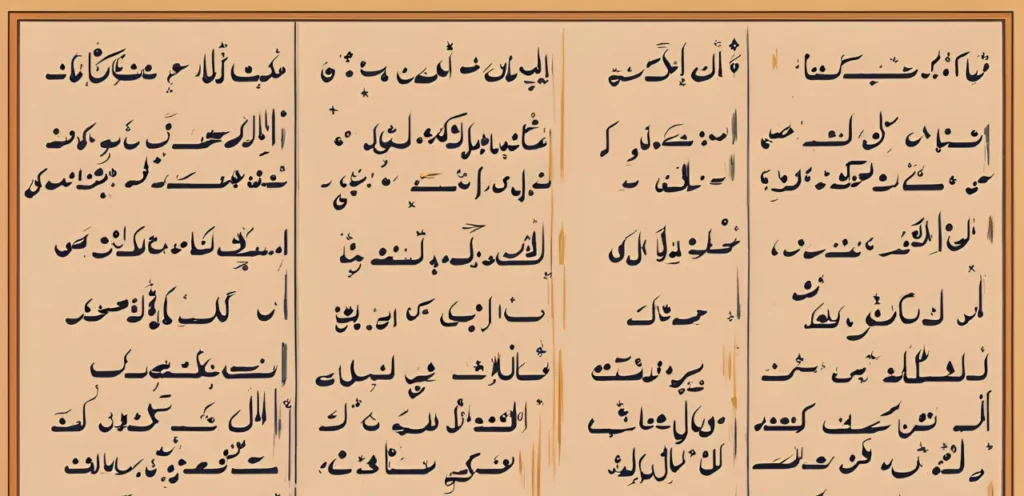
Understanding different types of sentences is crucial for effective communication in Urdu. Here are the main sentence types:
Declarative Sentences
These are statements that convey information:
- آج موسم خوشگوار ہے۔ (Aaj mausam khushgawaar hai.) The weather is pleasant today.
Interrogative Sentences
These are questions:
- آپ کا نام کیا ہے؟ (Aap ka naam kya hai? (What is your name?)
Imperative Sentences
These give commands or make requests:
- دروازہ بند کرو۔ (Darwaza band karo. – Close the door.)
Exclamatory Sentences
These express strong emotions:
- واہ! کیا خوبصورت منظر ہے! (Wah! Kya khoobsurat manzar hai! – Wow! (What a beautiful scene!)
Each type of sentence has its own structure and intonation in Urdu, which students should practice to improve their communication skills.
Advanced Grammar Concepts (for 8th to 10th grade)
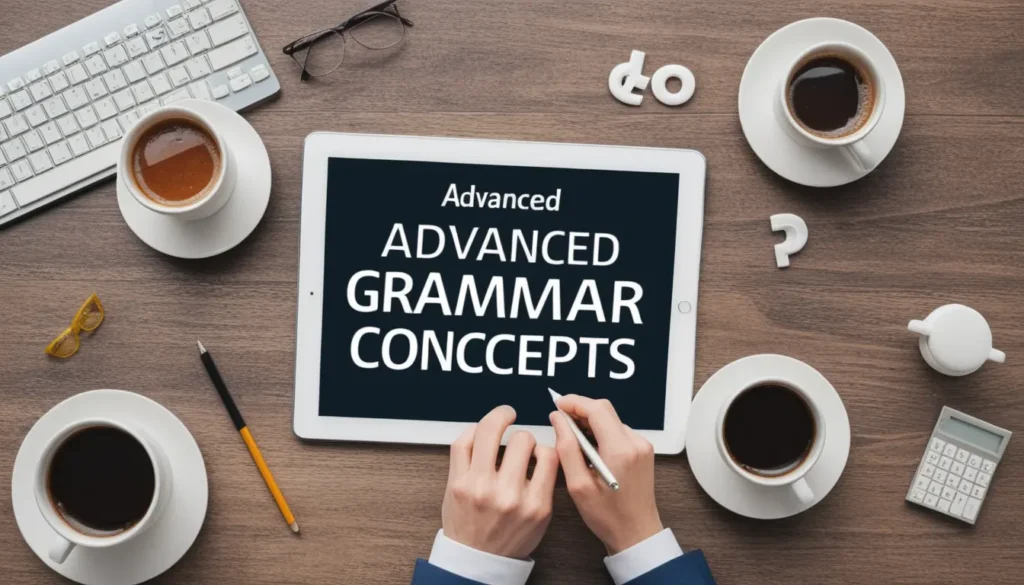
As students progress in their Urdu studies, they encounter more complex grammatical structures:
Conditional Sentences
Urdu uses specific structures for expressing conditions:
- اگر آپ محنت کریں گے تو کامیاب ہوں گے۔ (Agar aap mehnat karein ge to kamyaab hon ge.) If you work hard, you will succeed.
Passive Voice
The passive voice in Urdu is formed using the verb جانا (jana, to go):
- کتاب پڑھی جاتی ہے۔ (Kitab parhi jati hai.: The book is being read.)
Reported Speech
Urdu has specific rules for converting direct speech to reported speech:
- وہ بولا، “میں جا رہا ہوں۔” (Woh bola, “Main ja raha hoon.””—he said, “I am going.”)
- اس نے کہا کہ وہ جا رہا ہے۔ (Us ne kaha ke woh ja raha hai.) He said that he was going.
Mastering these advanced concepts allows students to express more complex ideas and engage with sophisticated Urdu texts.
Common Grammar Mistakes and How to Avoid Them
Even advanced learners can make mistakes in Urdu grammar. Here are some common errors and tips to avoid them:
- Gender agreement: Always check that adjectives and verbs agree with the gender of the noun. Incorrect: لڑکی گیا (Larki gaya) Correct: لڑکی گئی (Larki gayi)
- Overuse of Urdu equivalents of English words: Try to use native Urdu words when possible. Less preferable: یہ ایک اچھا آئیڈیا ہے۔ (Yeh ek achha idea hai.) Better: یہ ایک اچھا خیال ہے۔ (Yeh ek achha khayal hai.)
- Incorrect use of postpositions: Pay attention to which postposition goes with which verb. Incorrect: میں نے اس سے پوچھا۔ (Main ne us se poocha.) Correct: میں نے اس سے پوچھا۔ (Main ne us se poocha.)
- Word order in complex sentences: Remember that in Urdu, the main verb usually comes at the end of the sentence. Incorrect: میں نے دیکھا کہ وہ جاتا ہے۔ (Main ne dekha ke woh jata hai.) Correct: میں نے دیکھا کہ وہ جاتا ہے۔ (Main ne dekha ke woh jata hai.)
Regular practice and conscious effort to avoid these common mistakes will greatly improve your Urdu proficiency.
Urdu Grammar Resources and Practice Materials
To further enhance your Urdu grammar skills, consider using these resources:
- Online courses: Platforms like Duolingo and Aamozish offer free Urdu lessons.
- Textbooks: “Essential Urdu Grammar” by Ravinder Gargesh is a comprehensive guide.
- Language exchange apps: Practice with native speakers using apps like Tandem or HelloTalk.
- Urdu news websites: Reading news in Urdu can help reinforce grammar rules in context.
- Urdu literature: Gradually introduce yourself to Urdu poetry and prose to see grammar in action.
Remember, consistent practice is key to mastering Urdu grammar.
Conclusion
Mastering Urdu grammar is a journey that requires patience, practice, and persistence. From basic sentence structures to advanced concepts like conditional sentences and reported speech, each aspect of Urdu grammar contributes to the language’s rich expressiveness.
Key takeaways from this guide include:
- Understanding the SOV sentence structure of Urdu
- Recognizing the importance of gender and number agreement
- Mastering the use of postpositions and conjunctions
- Developing skills in constructing various types of sentences
- Being aware of common mistakes and how to avoid them
As you continue your Urdu learning journey, remember that language acquisition is a gradual process. Celebrate your progress, no matter how small, and don’t be afraid to make mistakes; they’re an essential part of learning.
We encourage you to practice regularly, immerse yourself in Urdu media, and seek opportunities to use the language in real-life situations. Consider joining Urdu language forums or finding a language exchange partner to practice your skills.
FAQs
Q1: What is the basic sentence structure in Urdu?
A1: Urdu follows a Subject-Object-Verb (SOV) word order, which is different from English. For example: میں کتاب پڑھتا ہوں۔ (Main kitab padhta hoon. – (I book.)
Q2: How do nouns change in Urdu based on gender?
A2: Urdu nouns are either masculine or feminine. Masculine nouns often end in ا (a) or ہ (h), while feminine nouns often end in ی (i) or ت (t). However, there are many exceptions to these rules.
Q3: How are plurals formed in Urdu?
A3: The rules for forming plurals vary depending on the gender and origin of the noun. For example, masculine nouns ending in ا (a) often change to ے (e) in plural form, while feminine nouns ending in ی (i) often add اں (an) for plural.
Q4: How do verbs change in Urdu?
A4: Urdu verbs change form based on the gender and number of the subject, as well as the tense of the sentence. They also reflect aspects and moods.
Q5: What are postpositions in Urdu?
A5: Postpositions in Urdu serve a similar function to prepositions in English, but they come after the noun or pronoun they modify. Common examples include کو (ko – to, for), میں (mein – in, into), and پر (par – on, upon).
Read Online Urdu Grammar (4th to 10th) Free PDF 2024 Read Online
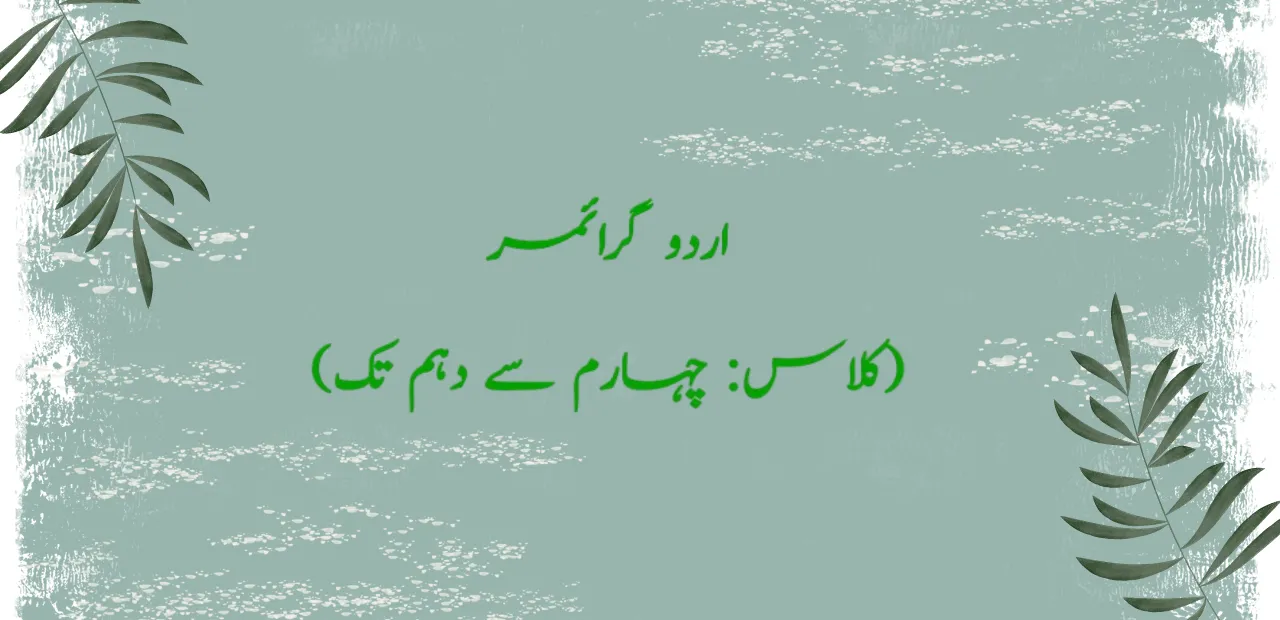
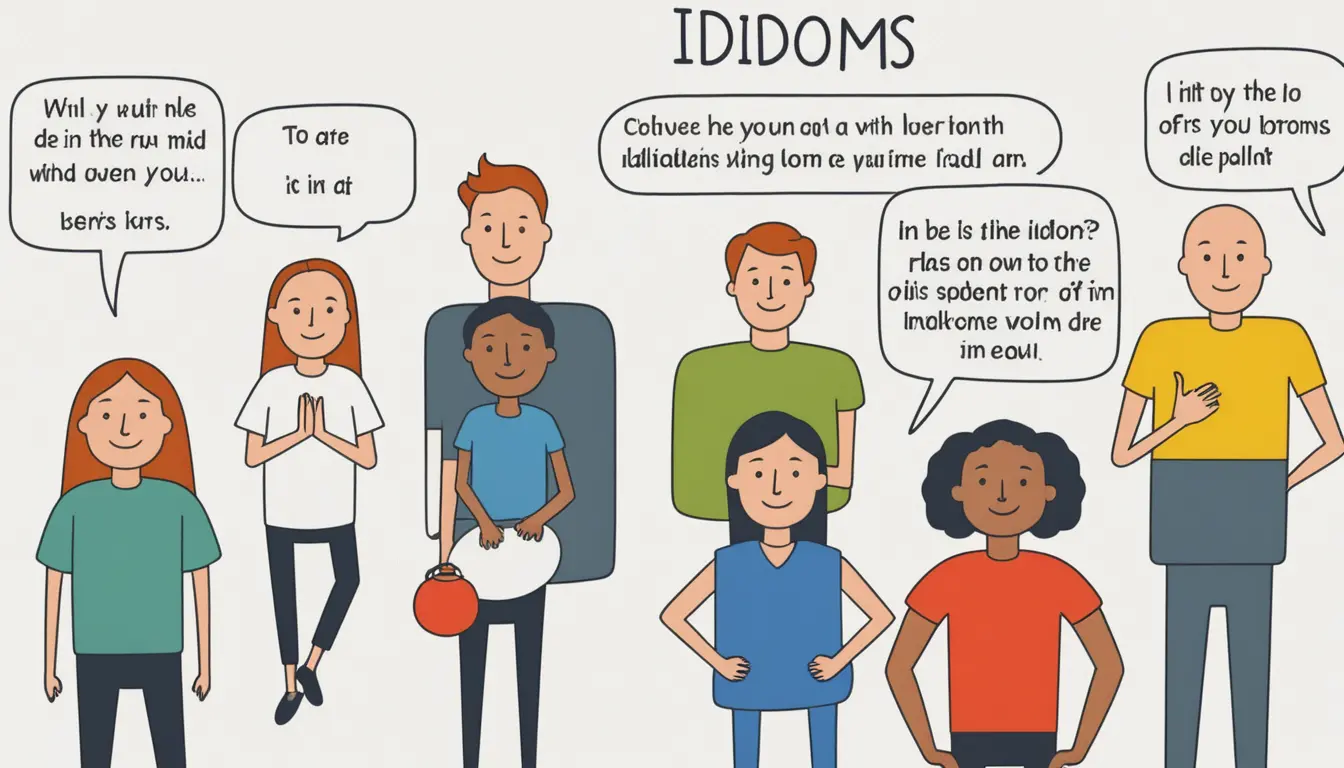







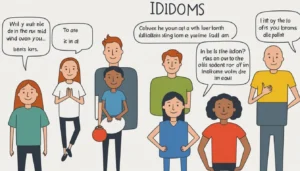

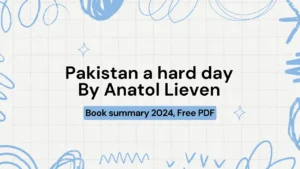


1 comment